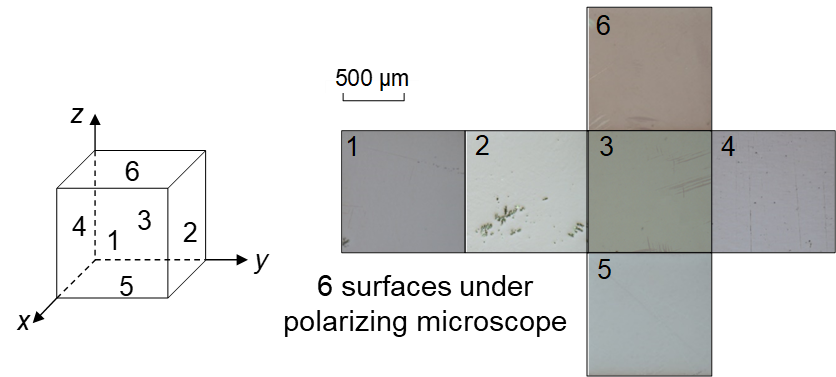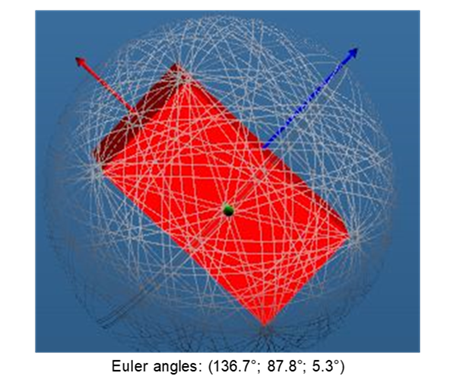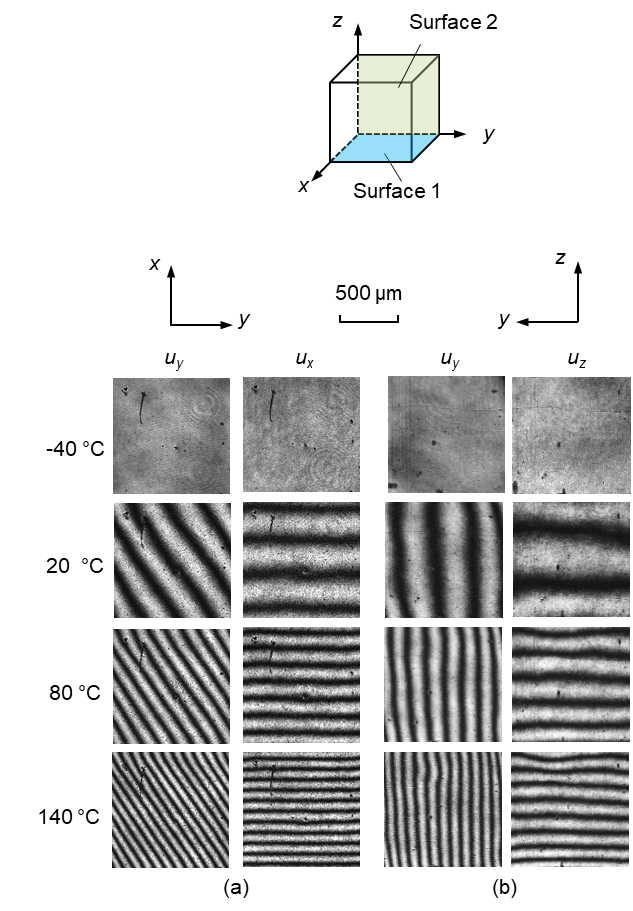Part I: Anisotropic Coefficients of Thermal Expansion of SAC Solder
 Since Pb was banned for the majority of manufactured electronics, hypoeutectic Pb-free solder, such as Sn3.0Ag0.5Cu (SAC305) and Sn1.0Ag0.5Cu (SAC105) solder alloys, have been widely accepted because they are cost-effective while offering performance like ternary near-eutectic SAC387 solder alloy. The hypo-eutectic SAC305 solder alloy contains 96.5% of Sn, and intermetallic compounds (IMCs) of Ag3Sn and Cu6Sn5 disperse around β-Sn grain matrix. Sn crystal has a body-central tetragonal structure with the lattice constants of a=b=1.833c. It has been reported that anisotropic elastic modulus and the coefficient of thermal expansion (CTE) of Sn unit cell can vary by a factor of 3 and 2, respectively.
Since Pb was banned for the majority of manufactured electronics, hypoeutectic Pb-free solder, such as Sn3.0Ag0.5Cu (SAC305) and Sn1.0Ag0.5Cu (SAC105) solder alloys, have been widely accepted because they are cost-effective while offering performance like ternary near-eutectic SAC387 solder alloy. The hypo-eutectic SAC305 solder alloy contains 96.5% of Sn, and intermetallic compounds (IMCs) of Ag3Sn and Cu6Sn5 disperse around β-Sn grain matrix. Sn crystal has a body-central tetragonal structure with the lattice constants of a=b=1.833c. It has been reported that anisotropic elastic modulus and the coefficient of thermal expansion (CTE) of Sn unit cell can vary by a factor of 3 and 2, respectively.

As a result, SAC305 solder joints are expected to have strong anisotropic thermal expansion responses since they contain a large amount of Sn. Recently, the anisotropic CTEs of SAC305 grains were measured by a CALCE research group, using a full-field in-plane displacement measurement technique called moiré interferometry. Cube shape specimens that contain single SAC305 grain were fabricated by controlling cooling rates. The thermally-induced displacements fields with a sub-micron resolution were documented on two perpendicular surfaces of the specimen as a function of temperature, and the engineering strains were calculated from the displacement fields. Then, directional CTE values were determined from theoretical relationships among (1) the transversely-isotropic CTEs, (2) the surface strains of a specimen containing a single grain with arbitrary orientation, and (3) the grain orientation direction.

Figure 1 shows the polarizing microscope images of the specimen, confirming that it contains only one grain. The electron backscatter diffraction (EBSD) method was employed to measure the grain orientation. The results are shown in Figure 2. The thermal displacements and the CTE values obtained from the specimen are shown in Figures 3 and 4, respectively.
Top
